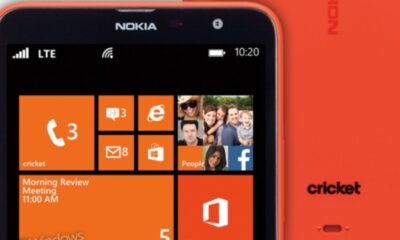Technology
What is a Network Termination Unit (NTU)?

Welcome to the gateway of seamless connectivity – where the world of telecommunications meets innovation! If you’ve ever wondered about those mysterious initials “NTU” floating around in the realm of networking, you’re in for a treat. Today, we unravel the enigma behind Network Termination Units (NTUs) and explore how these unsung heroes play a vital role in keeping our digital world interconnected and humming with efficiency. So buckle up as we dive into the fascinating universe of NTUs and discover their hidden powers!
Understanding the Basics: What is a Network Termination Unit (NTU)?
Ever wondered how your internet connection magically springs to life the moment you hit “connect”? Enter the Network Termination Unit (NTU) – the unsung hero behind this digital symphony. In simple terms, an NTU acts as a bridge between your home or office network and the wider telecommunication infrastructure. Think of it as a translator that helps your devices communicate seamlessly with the outside world.
The primary function of an NTU is to terminate connections from service providers and distribute them within your premises. It serves as a crucial link in the chain, ensuring smooth data transfer and reliable communication channels. By managing signals and maintaining network integrity, NTUs pave the way for uninterrupted connectivity and efficient data flow.
So next time you binge-watch your favorite series or join a virtual meeting, remember to give a nod of appreciation to these unassuming yet essential pieces of technology silently working behind the scenes!
The Purpose of an NTU
The purpose of a Network Termination Unit (NTU) is essential in telecommunications networks. It serves as the demarcation point between the service provider’s network and the customer’s premises. An NTU acts as a bridge, ensuring seamless communication between these two entities.
One key function of an NTU is to convert signals from the service provider into a format that can be easily transmitted through the customer’s internal network infrastructure. This conversion process helps optimize signal strength and quality, leading to enhanced connectivity for users.
Moreover, NTUs play a crucial role in monitoring and managing network performance. They provide valuable data on connection status, bandwidth usage, and potential issues within the network. This real-time information allows for quick troubleshooting and maintenance efforts to ensure uninterrupted services for customers.
The primary purpose of an NTU is to facilitate efficient communication between service providers and end-users while maintaining high standards of reliability and performance in telecommunications networks.
Types of NTUs and Their Functions
When it comes to Network Termination Units (NTUs), there are different types tailored for specific telecom needs.
1. **Fiber NTU**: Designed for fiber-optic networks, these units convert optical signals into electrical signals and vice versa.
2. **DSL NTU**: Used in Digital Subscriber Line connections, these units help establish a high-speed internet connection over traditional telephone lines.
3. **Ethernet NTU**: Ideal for Ethernet-based services, these units facilitate the smooth transmission of data packets within local area networks.
4. **Wireless NTU**: Utilized in wireless networks, these units enable seamless connectivity without the need for physical cables.
Each type of NTU serves a unique function to ensure efficient communication across various network infrastructures, catering to diverse user requirements and technological advancements in the telecommunications industry.
How an NTU Works in Telecommunications Networks
In the realm of telecommunications networks, a Network Termination Unit (NTU) plays a crucial role in ensuring smooth data transmission. NTUs serve as the interface between customer equipment and service provider networks, acting as the bridge that allows for seamless communication.
When a signal is sent from a provider’s network to a customer’s location, the NTU receives and processes this information before delivering it to the end-user device. This process involves converting digital signals into analog ones if needed, ensuring compatibility between different types of equipment.
Moreover, NTUs often come equipped with diagnostic features that help monitor network performance and troubleshoot any issues that may arise. By providing valuable insights into network operations, NTUs enable providers to deliver reliable services to their customers efficiently.
Understanding how an NTU functions within telecommunications networks sheds light on its importance in maintaining connectivity and optimizing data transfer processes.
Benefits of Using an NTU
When it comes to utilizing a Network Termination Unit (NTU) in telecommunications networks, there are several key benefits that come with incorporating this essential device into your setup.
One of the main advantages of using an NTU is its ability to provide a clear demarcation point between the service provider’s network and the customer’s premises. This delineation helps in pinpointing any potential issues or troubleshooting needs quickly and efficiently.
Additionally, NTUs offer enhanced security features, ensuring data integrity and confidentiality during transmission. With encryption capabilities and secure protocols, sensitive information remains protected throughout the communication process.
Moreover, NTUs contribute to improving network performance by optimizing signal quality and reducing interference. This results in faster data transfer speeds and enhanced overall network reliability for seamless operations.
By leveraging these benefits of an NTU, businesses can streamline their telecommunication infrastructure while enhancing connectivity and productivity across their operations.
Factors to Consider When Choosing an NTU
When selecting a Network Termination Unit (NTU) for your telecommunications network, there are several essential factors to keep in mind. Consider the compatibility of the NTU with your existing network infrastructure. It’s crucial that the NTU can seamlessly integrate with your current setup to avoid any connectivity issues.
Another important factor is scalability. Ensure that the chosen NTU can cater to your future expansion needs without requiring frequent upgrades or replacements. Additionally, look into the security features offered by the NTU to safeguard your network against potential threats and breaches.
Reliability is key when choosing an NTU – opt for a unit known for its stability and durability to minimize downtime and maintenance costs. Consider the technical support provided by the manufacturer or supplier in case you encounter any issues down the line.
By carefully evaluating these factors, you can select an NTU that meets your specific requirements and contributes to an efficient and secure telecommunications network setup.
Common Issues and Troubleshooting Tips for NTUs
When it comes to Network Termination Units (NTUs), encountering issues can be frustrating but knowing how to troubleshoot them is key. One common problem users face is a loss of internet connection. If this happens, check the cables and ensure they are securely connected. Sometimes simply restarting the NTU can resolve connectivity issues.
Another issue that may arise is slow internet speed. To address this, try rebooting both the NTU and your router to refresh the connection. Additionally, check for any interference from other devices or appliances that could be affecting your signal strength.
If you notice frequent disconnections or fluctuations in your connection stability, it could indicate a more serious issue with the NTU hardware itself. In such cases, contacting your service provider for further assistance or a possible replacement may be necessary.
By being proactive in troubleshooting these common problems with NTUs, you can ensure a smoother and more reliable telecommunications experience overall.
Future of NTUs in Telecommunication Technology
As technology continues to evolve at a rapid pace, the future of Network Termination Units (NTUs) in telecommunication is promising. With the growing demand for faster and more reliable network connections, NTUs are expected to play a crucial role in ensuring seamless communication.
In the coming years, we can anticipate advancements in NTU technology that will enhance their capabilities even further. This could include improved compatibility with emerging networks like 5G, enhanced security features to protect data transmission, and increased flexibility to adapt to changing network configurations.
Moreover, as Internet of Things (IoT) devices become more prevalent, NTUs may also be optimized to better support the increasing number of connected devices within a network. This means that NTUs will likely continue to be an essential component in building efficient and robust telecommunications infrastructure for both businesses and consumers alike.
The future of NTUs looks bright as they continue to adapt and innovate alongside evolving telecommunication technologies.
Conclusion
In the fast-paced world of telecommunications, Network Termination Units (NTUs) play a crucial role in enabling smooth and efficient communication across networks. These devices serve as the bridge between service providers and end-users, ensuring reliable connectivity and data transmission.
As technology continues to evolve, NTUs are expected to become even more sophisticated, offering advanced features and capabilities to meet the growing demands of modern telecommunication networks. By understanding the basics of NTUs, exploring their functions, benefits, and troubleshooting tips, businesses can make informed decisions when choosing these essential devices for their network infrastructure.
With their ability to streamline network operations, enhance reliability, and improve overall performance, NTUs will undoubtedly remain a cornerstone of telecommunications technology in the years to come. Stay tuned for exciting advancements in NTU technology that promise to revolutionize how we connect and communicate in an increasingly digital world.
Technology
Take Charge: 10 Proven Strategies for Discord Gain Control

In the realm of online communities, maintaining harmony and control can be a daunting task. Discord, a popular platform for communication and collaboration, often presents challenges in managing conflicts and maintaining order. However, with the right strategies and approaches, gaining control over discord is not only achievable but can also lead to a thriving and vibrant community. In this comprehensive guide, we’ll delve into 10 proven strategies to help you take charge and foster a positive environment within your discord community.
Establish Clear Guidelines and Rules
Setting clear guidelines and rules is essential for creating a structured environment within your discord community. By clearly outlining expectations regarding behavior, language, and interactions, you provide members with a framework for appropriate conduct. Additionally, ensure that these guidelines are easily accessible and prominently displayed to all members.
Foster Open Communication Channels
Encourage open communication channels where members feel comfortable expressing their thoughts, concerns, and ideas. By fostering an environment of transparency and openness, you promote constructive dialogue and minimize the likelihood of conflicts escalating.
Lead by Example
As a leader within the community, it’s crucial to lead by example and demonstrate the behavior you wish to see in others. Uphold the values and principles outlined in your guidelines, and actively engage with members in a respectful and positive manner.
Implement Moderation Strategies
Effective moderation is key to maintaining control and order within your discord community. Establish a team of moderators who are tasked with enforcing the rules, addressing conflicts, and ensuring that discussions remain productive and respectful.
Encourage Collaboration and Teamwork
Promote collaboration and teamwork among members by creating opportunities for joint projects, discussions, and events. By fostering a sense of camaraderie and shared purpose, you can strengthen bonds within the community and reduce the likelihood of discord.
Provide Support and Resources
Offer support and resources to members who may be struggling with conflicts or challenges within the community. Whether it’s providing guidance on conflict resolution or offering access to counseling services, demonstrating empathy and support can help mitigate discord.
Address Issues Promptly
Address issues and conflicts promptly to prevent them from escalating further. Take proactive measures to resolve disputes, mediate conflicts, and ensure that all parties involved feel heard and understood.
Cultivate a Positive Culture
Cultivate a positive culture within your discord community by celebrating achievements, recognizing contributions, and fostering a sense of belonging. Encourage positivity, optimism, and mutual respect among members.
Conduct Regular Check-ins
Conduct regular check-ins with members to solicit feedback, assess the overall health of the community, and identify any emerging issues or concerns. Use these check-ins as an opportunity to reinforce the values and principles of the community and address any areas of improvement.
Continuously Evolve and Adapt
Finally, recognize that maintaining control over discord is an ongoing process that requires continuous evolution and adaptation. Stay vigilant to changes within the community, solicit feedback from members, and be willing to adjust your strategies as needed to ensure the long-term success and sustainability of your discord community.
Discord Gain Control
Achieving control over discord within your community requires a proactive and multifaceted approach. By implementing the strategies outlined above, you can create a positive and harmonious environment where members feel valued, respected, and empowered to contribute positively. Remember, effective leadership, clear communication, and a commitment to fostering a supportive and inclusive community are key to gaining control over discord.
Conclusion:
In conclusion, gaining control over discord within your community is a multifaceted endeavor that requires proactive leadership, clear communication, and a commitment to fostering a positive and inclusive environment. By implementing the strategies outlined in this guide and prioritizing the well-being of your members, you can create a thriving discord community where collaboration flourishes, conflicts are resolved constructively, and members feel valued and supported.
FAQs:
How can I prevent conflicts from escalating in my discord community?
To prevent conflicts from escalating, it’s essential to establish clear guidelines, foster open communication, and address issues promptly. Encourage respectful dialogue and provide support to members who may be struggling with conflicts.
What role do moderators play in maintaining control over discord?
Moderators play a crucial role in enforcing rules, mediating conflicts, and ensuring that discussions remain productive and respectful. By empowering moderators to take proactive measures, you can effectively maintain order within your discord community.
Is it possible to create a positive culture within a discord community?
Yes, creating a positive culture within a discord community is achievable with the right strategies and approaches. By fostering a sense of belonging, celebrating achievements, and promoting mutual respect, you can cultivate a supportive and inclusive environment where members thrive.
How can I encourage collaboration and teamwork among members?
Encourage collaboration and teamwork by creating opportunities for joint projects, discussions, and events. Foster a sense of camaraderie and shared purpose, and provide support to members who may be interested in collaborating with others.
What should I do if conflicts arise despite my efforts to prevent them?
If conflicts arise despite your efforts to prevent them, it’s essential to address them promptly and effectively. Take proactive measures to resolve disputes, mediate conflicts, and ensure that all parties involved feel heard and understood.
How can I ensure the long-term success of my discord community?
To ensure the long-term success of your discord community, focus on effective leadership, clear communication, and continuous improvement. Stay vigilant to changes within the community, solicit feedback from members, and be willing to adapt your strategies as needed.
Technology
.vid Format: Maximizing Video Content Impact

In today’s digital landscape, video content reigns supreme. From social media to corporate presentations, videos are ubiquitous. However, with the rise of various video formats, it’s crucial to understand the nuances of each. One such format gaining traction is .vid. In this comprehensive guide, we’ll delve into everything you need to know about .vid format, from its advantages to optimization techniques.
Understanding .vid Format
· What is .vid format?
In essence, . vid format is a versatile video file extension designed for optimal playback and sharing across various platforms. Unlike traditional formats like .mp4 or .mov, .vid offers enhanced compression without compromising quality, making it ideal for online distribution.
· The Advantages of .vid Format
Harnessing .vid forma’t for your video content comes with a myriad of benefits. Firstly, its efficient compression algorithm ensures faster loading times, reducing buffering and enhancing user experience. Moreover, .vid files tend to be smaller in size, facilitating easier sharing and storage. Additionally, .vid’s compatibility across devices and platforms makes it a versatile choice for content creators.
Optimizing Your Videos in .vid Format
· Creating High-Quality .vid Content
To leverage the full potential of .vid forma’t, prioritize producing high-quality videos. Invest in professional equipment and editing software to capture and edit footage with precision. Remember, the foundation of compelling video content lies in its visual and auditory appeal.
· Optimal Compression Techniques
One of the hallmark features of .vid forma’t is its efficient compression. When encoding your videos, utilize modern codecs like H.265 to strike the perfect balance between file size and quality. Experiment with different compression settings to find the optimal configuration for your content.
· Enhancing Accessibility and SEO
Incorporating closed captions and transcripts not only improves accessibility but also boosts SEO. Search engines index textual content, making your videos more discoverable to a wider audience. Additionally, include relevant keywords in your video titles, descriptions, and tags to improve search engine rankings.
Best Practices for .vid Format Implementation
· Cross-Platform Compatibility
Ensure your videos are compatible across various devices and operating systems. Test playback on different browsers and devices to guarantee a seamless viewing experience for your audience.
· Engagement Optimization
Encourage viewer interaction by incorporating interactive elements such as clickable annotations or embedded links. Foster community engagement through comments, likes, and shares to amplify your video’s reach.
· Analytics and Iteration
Utilize analytics tools to gain insights into viewer behavior and preferences. Analyze metrics such as watch time, engagement rate, and audience demographics to refine your content strategy iteratively.
Conclusion
In conclusion, embracing .vid forma’t offers a myriad of opportunities for content creators to elevate their video content. By understanding its nuances and implementing optimization techniques, you can maximize the impact and reach of your videos across digital platforms.
Visit For More: windowsphonedaily
FAQs (Frequently Asked Questions)
How does .vid format differ from traditional video formats like .mp4?
.vid forma’t utilizes advanced compression algorithms, resulting in smaller file sizes without sacrificing quality, unlike traditional formats.
Can I convert existing video files to .vid format?
Yes, various online converters and software tools allow you to convert existing video files to .vid forma’t effortlessly.
Is .vid format compatible with all video editing software?
While .vid forma’t is widely supported, it’s essential to ensure compatibility with your preferred video editing software.
Are there any limitations to .vid format?
While .vid forma’t offers numerous advantages, it’s essential to consider potential compatibility issues with older devices or software versions.
How can I optimize my website for .vid content?
Incorporate .vid files strategically within your website’s design, ensuring seamless integration and optimal user experience.
Can .vid format improve my video’s SEO performance?
Yes, by incorporating relevant keywords and metadata, .vid forma’t can enhance your video’s discoverability and search engine rankings.
Technology
Potential of Pornografia Telegram: A Comprehensive Guide

Welcome to the ultimate guide on pornografia telegram. In today’s digital age, communication and information-sharing have evolved significantly. Porno-grafia telegram emerges as a powerful platform offering unique benefits and opportunities for users. Whether you’re a content creator, marketer, or enthusiast, understanding the intricacies of porno-grafia telegram can unlock a world of possibilities. This guide aims to delve deep into the functionalities, advantages, and best practices surrounding porno-grafia telegram, ensuring you harness its full potential.
Understanding Pornografia Telegram
Venture into the realm of porno-grafia telegram, where innovation meets communication. This section provides an overview of what porno-grafia telegram is and how it functions. From its inception to its current standing in the digital landscape, uncover the essence of this platform.
Pornografia Telegram: A Haven for Content Enthusiasts
Embark on a journey through the dynamic landscape of porno-grafia telegram. Dive into its diverse features and capabilities, catering to the needs of modern content creators and consumers alike.
Exploring the Features of Pornografia Telegram
Delve deeper into the functionalities that make porno-grafia telegram a standout platform in the digital sphere. From its seamless interface to its robust security measures, discover why millions flock to porno-grafia telegram for their content needs.
Enhanced Security Measures: Safeguarding Your Privacy
Privacy concerns are paramount in today’s interconnected world. Explore how porno-grafia telegram prioritizes user security through end-to-end encryption and other advanced features, ensuring a safe and secure environment for all.
Maximizing Your Presence on Pornografia Telegram
Unleash the full potential of porno-grafia telegram by optimizing your presence on the platform. Whether you’re a content creator, marketer, or business owner, implementing effective strategies can elevate your visibility and engagement.
Creating Compelling Content: Captivating Your Audience
Content is king in the digital realm, and porno-grafia telegram offers a fertile ground for creativity. Learn how to craft engaging content that resonates with your audience, driving traffic and fostering meaningful connections.
Utilizing Pornografia Telegram for Marketing Purposes
Discover the myriad ways in which porno-grafia telegram can serve as a powerful tool for marketing initiatives. From building brand awareness to driving conversions, leverage the platform’s unique features to enhance your marketing endeavors.
Engaging with Your Audience: Fostering Community Connections
Building a strong community is essential for sustained success on pornografia telegram. Explore strategies for fostering meaningful interactions, cultivating loyalty, and nurturing a vibrant online community around your brand or content.
Conclusion
In conclusion, porno-grafia telegram emerges as a dynamic platform offering a wealth of opportunities for content creators, marketers, and enthusiasts alike. By understanding its features, maximizing your presence, and leveraging effective strategies, you can unlock the full potential of porno-grafia telegram and propel your online endeavors to new heights.
FAQs (Frequently Asked Questions)
What makes pornografia telegram different from other messaging platforms?
Porno-grafia telegram stands out for its commitment to privacy, security, and versatility. Unlike traditional messaging platforms, porno-grafia telegram offers end-to-end encryption, self-destructing messages, and a host of other features tailored to content creators and consumers.
How can I join pornografia telegram?
Joining porno-grafia telegram is easy and straightforward. Simply download the app from the App Store or Google Play Store, create an account, and start exploring the platform’s myriad features and communities.
Is pornografia telegram suitable for businesses and marketers?
Absolutely! Porno-grafia telegram offers a wealth of opportunities for businesses and marketers to connect with their target audience, drive engagement, and promote their products or services effectively.
Can I monetize my content on pornografia telegram?
Yes, you can monetize your content on porno-grafia telegram through various means, such as premium subscriptions, exclusive content, and sponsored posts. With the right approach, you can turn your passion into profit on this platform.
Is pornografia telegram safe to use?
Yes, porno-grafia telegram prioritizes user privacy and security. With features like end-to-end encryption and self-destructing messages, you can rest assured that your conversations and data are protected from prying eyes.
How can I increase my followers on pornografia telegram?
Building a following on porno-grafia telegram requires consistent effort and engagement. Share high-quality content, interact with your audience, and leverage hashtags and communities to expand your reach and attract new followers.
Fore More Visit: windowsphonedaily
-

 General4 months ago
General4 months agoIntroduction to the Concept of a Favorite Daughter
-

 Travel5 months ago
Travel5 months agoExploring the Wonders of myfavouriteplaces.org:// blog
-

 Technology5 months ago
Technology5 months agoInstagram Stories No Sound: Unveiling the Silence Dilemma
-

 Technology2 months ago
Technology2 months ago.vid Format: Maximizing Video Content Impact
-

 Celebrity5 months ago
Celebrity5 months agoMatthew Mcconaughey Net Worth
-

 News3 months ago
News3 months agoNokia Lumia 1320 now available from Cricket Wireless for $229 after rebate
-

 Technology5 months ago
Technology5 months agoPs5 Pro Specs: Expected Release Date, Specs, and New Features
-

 Technology2 months ago
Technology2 months agoAmazon GPT-55X: Revolutionizing AI-Powered Solutions
